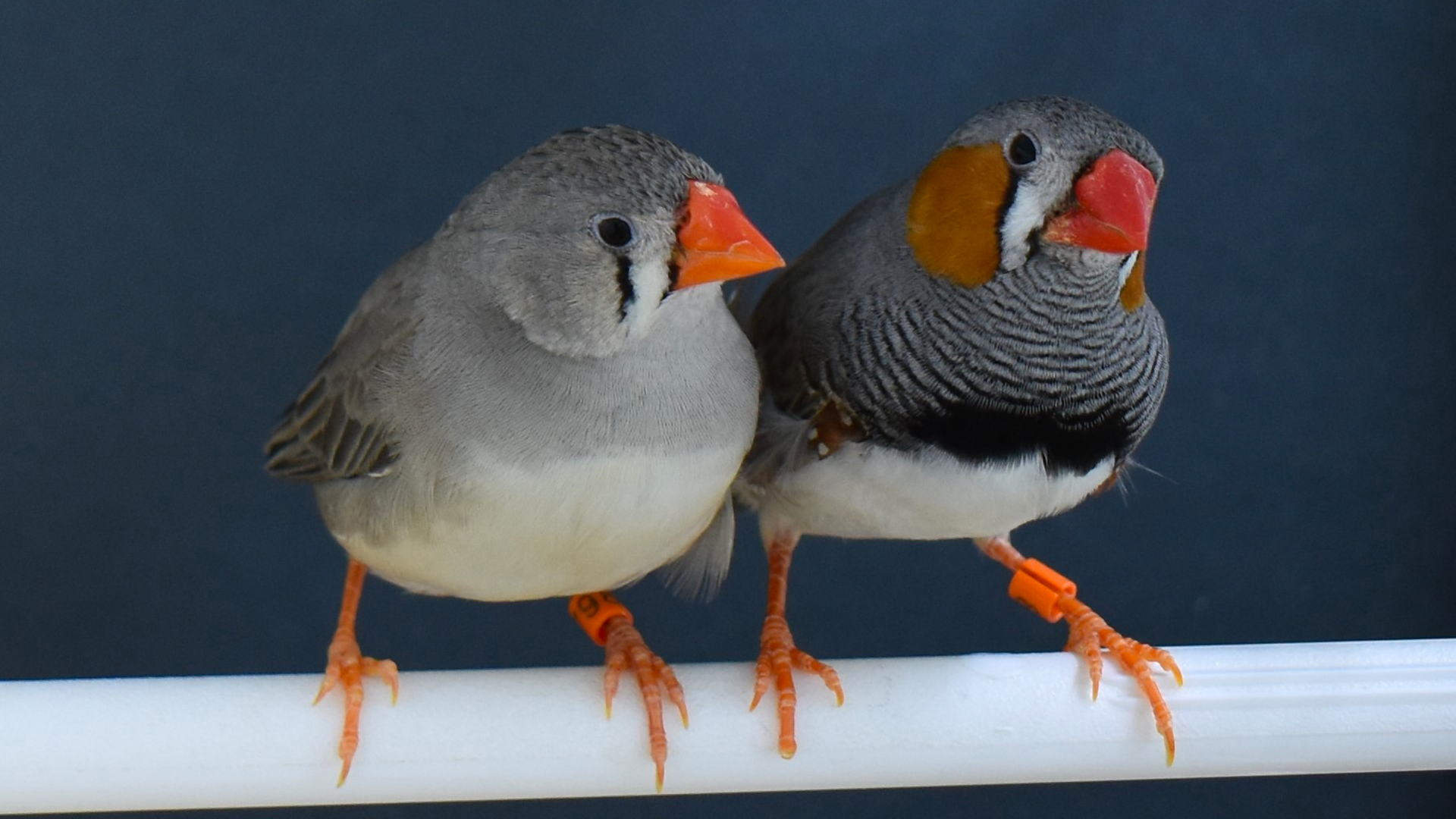Songbirds

A female (left) and male zebra finch. Credit: Animal Cognition Research Group, University of Alberta
Experience, especially during early life, plays a powerful role in shaping the function and connectivity of the developing brain. Young zebra finches, for example, learn their vocalization, a complex sequence of vocal and motor gestures, by listening to a parental tutor and then practicing their song for several months. How the circuitry in the forebrain nuclei known as RA, HVC and NIf produce these motor patterns and how they can be altered by behavioral experience offers a unique model for addressing questions of neuronal plasticity. Songbirds also provide a robust system for multi-electrode recordings of brain activity and two-photon imaging of intracellular signals in freely behaving animals. These tools, coupled with the recent sequencing of the zebra finch genome, are allowing the songbird to emerge as a preferred model to study speech acquisition and the development and function of the underlying neuronal circuitry. In addition, the songbird provides a great model in which to study neurogenesis, as newborn neurons are constantly added to the singing neuronal circuit. Characterizing how these neurons migrate, connect and functionally integrate into mature neuronal circuits is an exciting question for the neurogenesis field. For more information on research into songbirds at MIT, visit the lab of Michale Fee.

